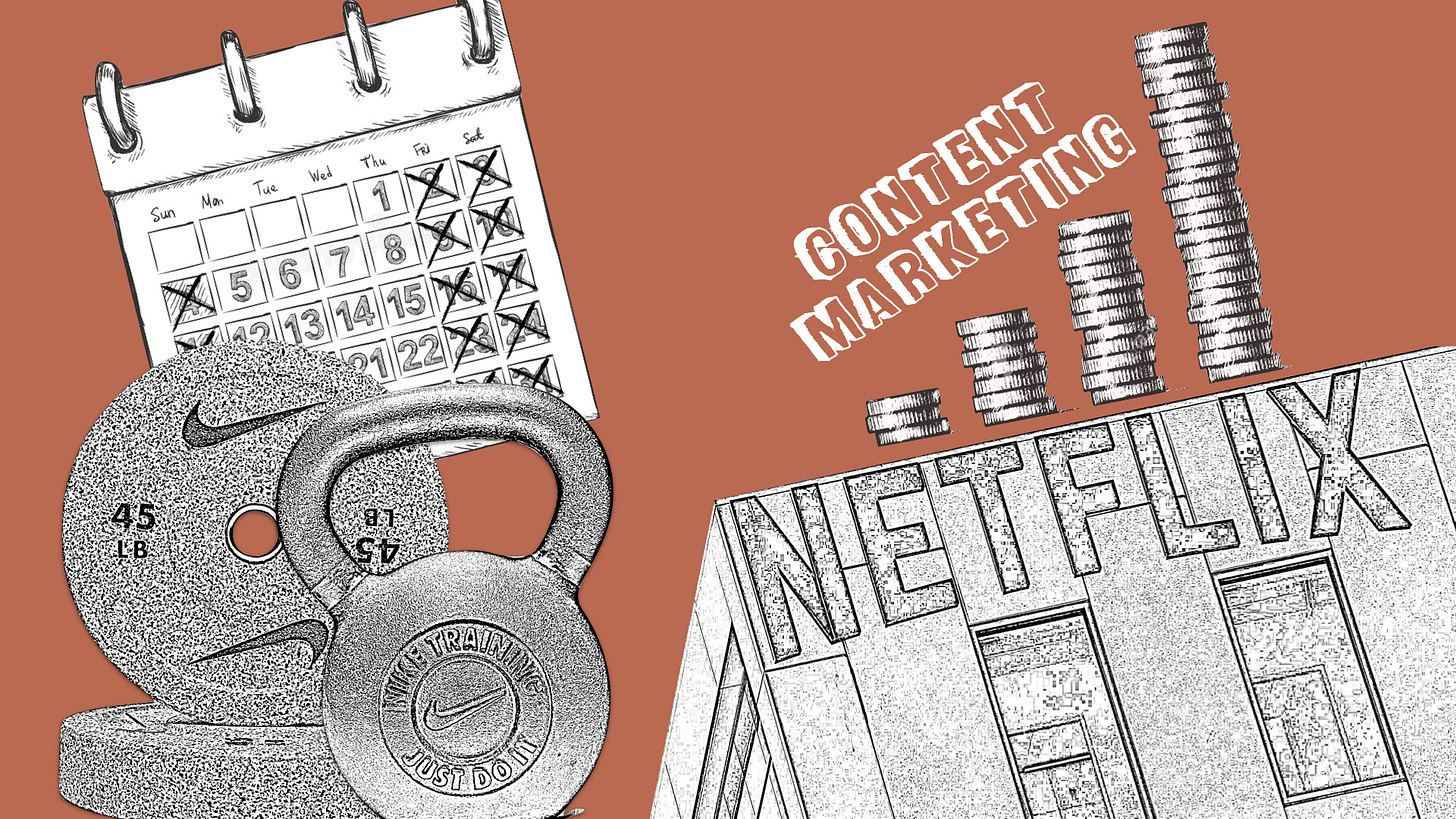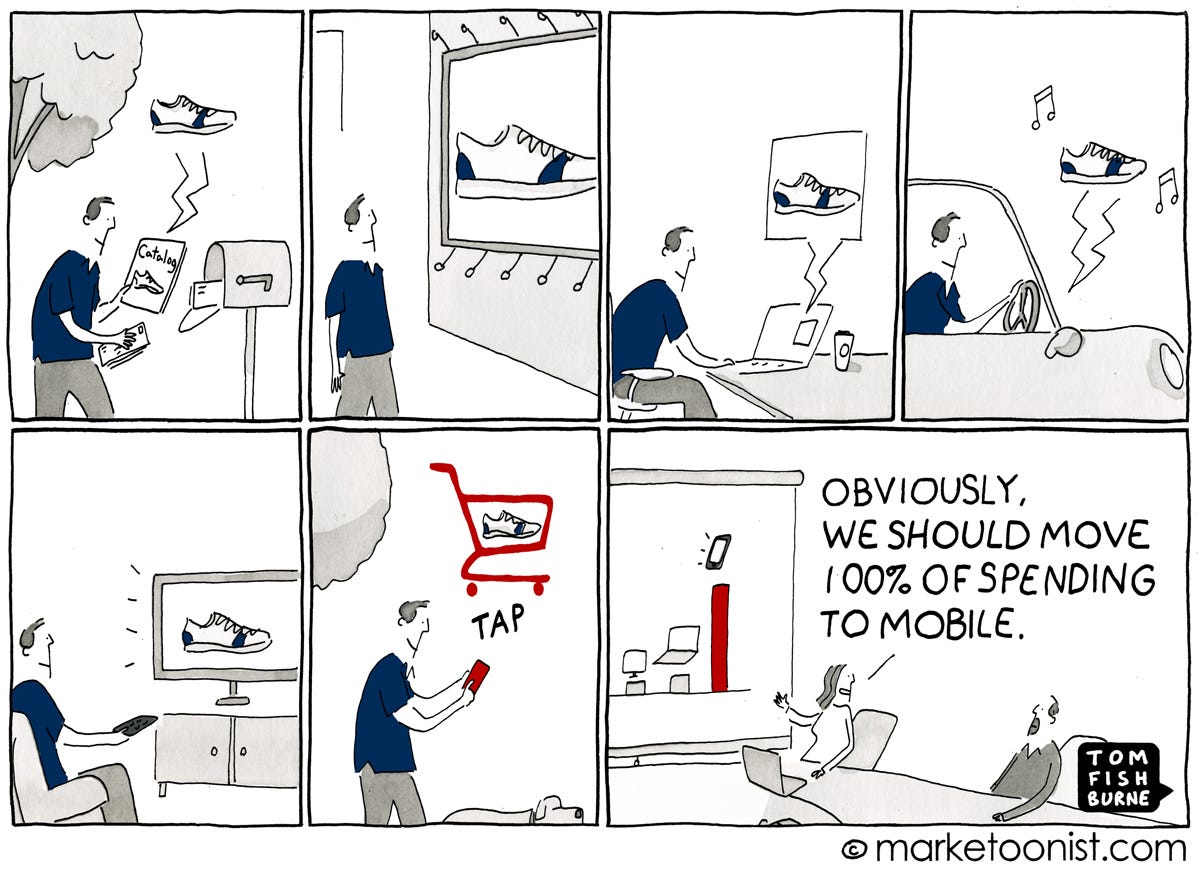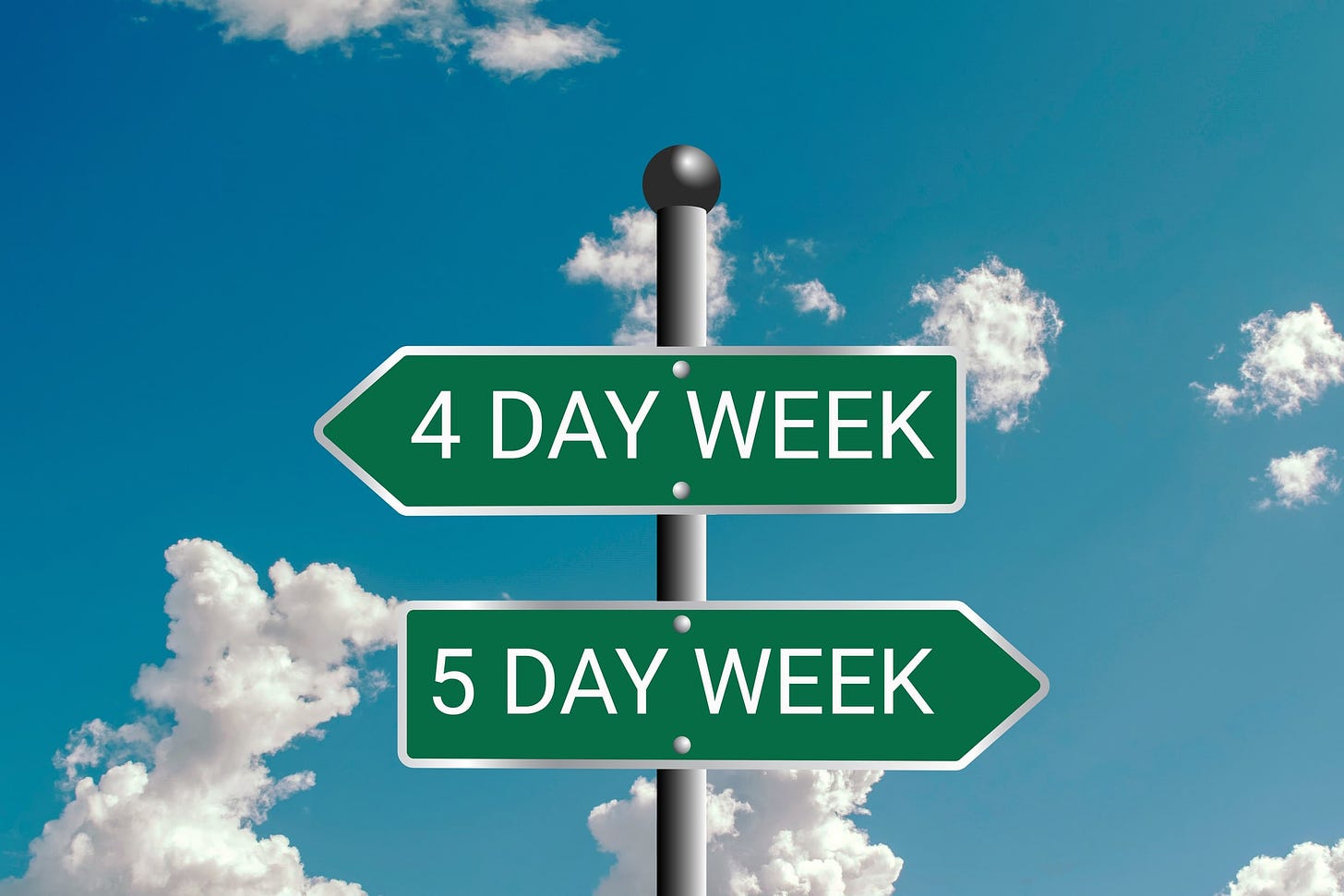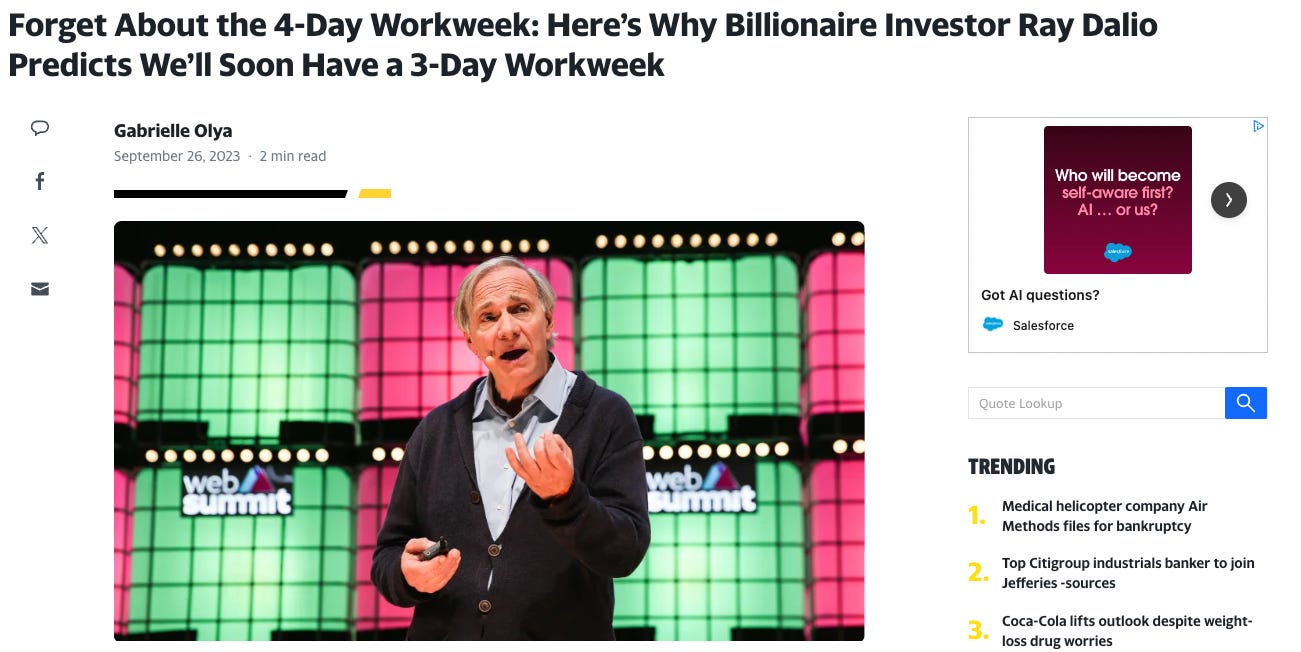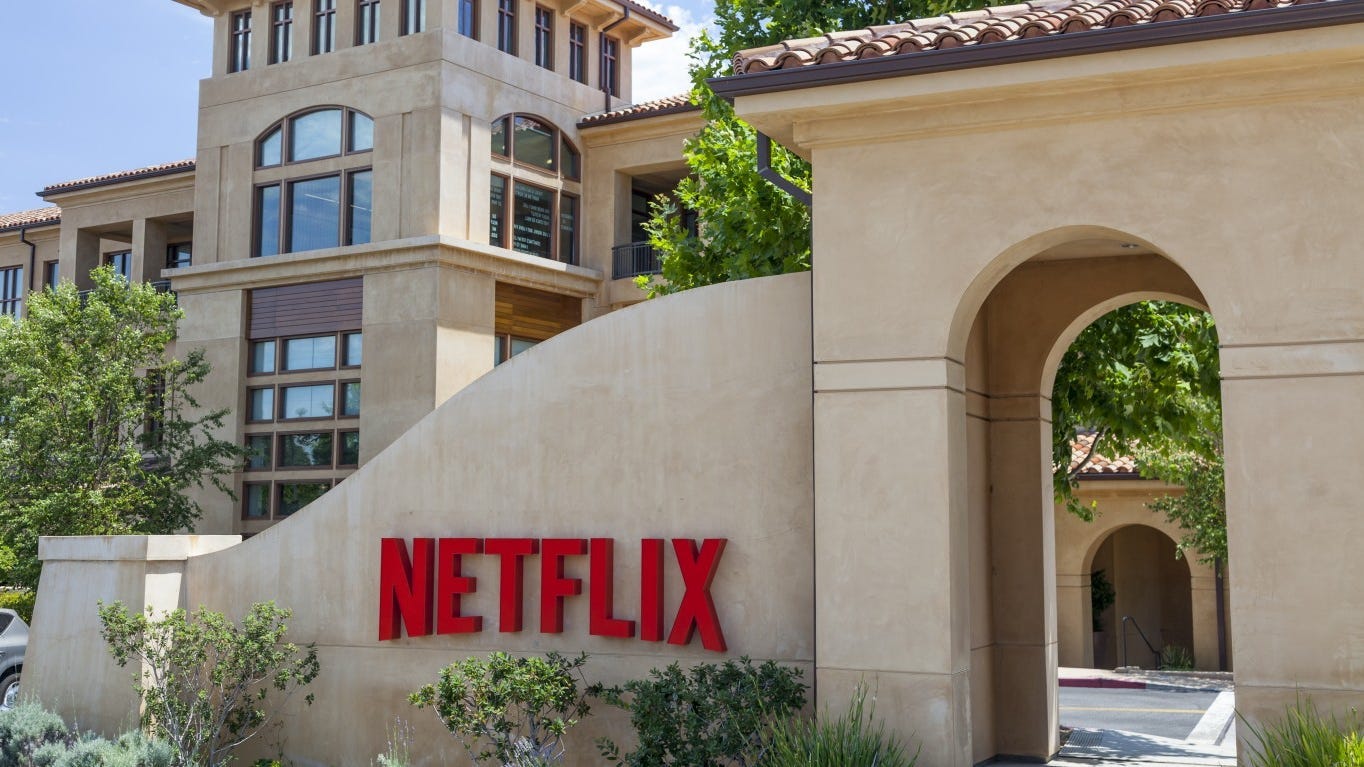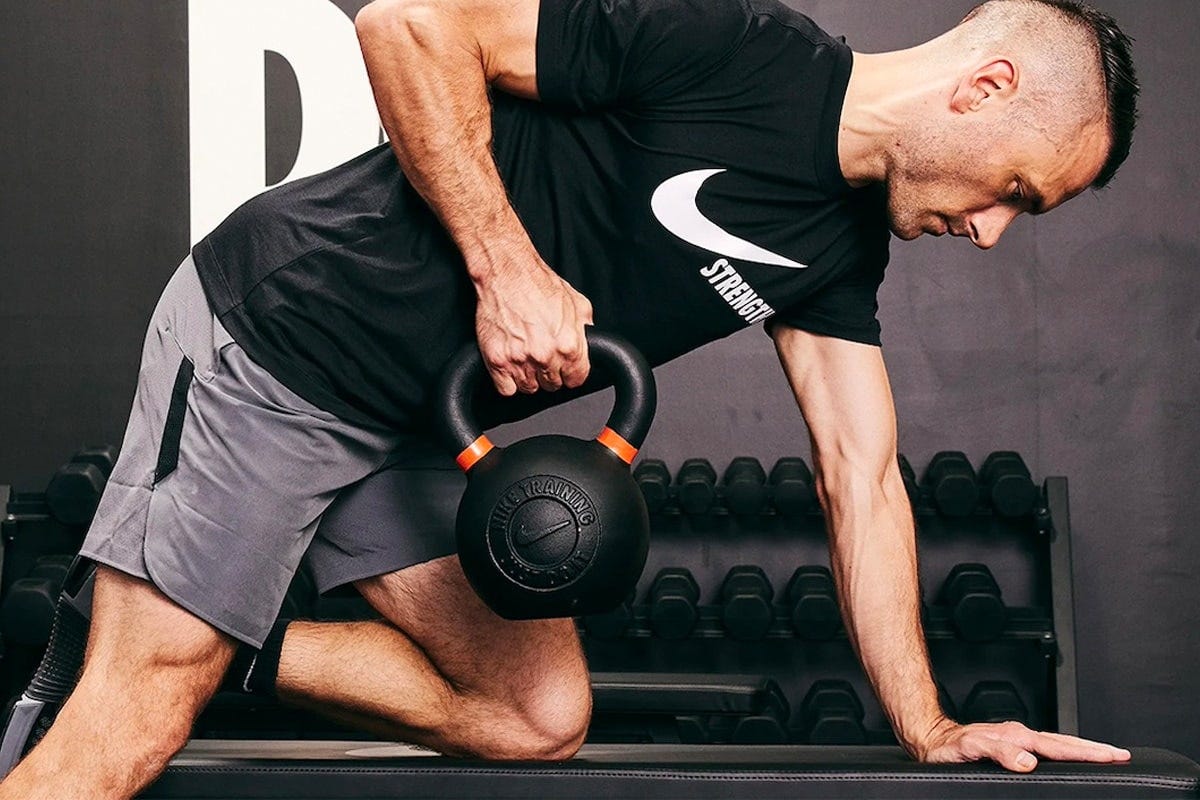Angus Certified #019
How to better connect content marketing to revenue, the three-day work week (?), and some thoughts on recent moves from Netflix and Nike.
What is old is new again. Netflix is rumoured to be opening their own brick-and-mortar retail stores soon (essentially a new-age Blockbuster with some cool graphics and set decorations), and from the Fuelband to bumper plates, Nike is getting back into the fitness game in a non-shoes/clothing way.
Will it work this time?
I also share some thoughts on connecting marketing, and specifically content marketing, to revenue. And the four-day work has a new competitor. Enter… the three-day workweek. This, my friends, is true innovation.
My goal of delivering a biweekly newsletter has been a miss, but that is life. Still my North Star… 2024? Maybe once we get down to the one-day workweek.
Thanks for reading. Let’s get to it.
Jeff
Measuring content attribution
Connecting marketing, and specifically content, to revenues, is not easy. But this article gives it a go. Companies should have an idea of what is driving revenues, whether it is marketing-led or not.
The article breaks up content attribution into direct or assist. You can probably guess what they mean, but here are the definitions:
Content direct: This is revenue generated directly by content, in which a lead downloaded content on their own accord (usually first touch attribution here) and later became a customer. Content drove this lead.
Content assist: This is revenue generated by activity outside of content say, sales or the paid media team. This can be through first-touch or last-touch attribution models. But, content played a role in converting this lead––either they downloaded content after sales reached out, or the paid media team used a downloadable asset in a campaign. These are all content assists.
This article is quite tactical and doesn’t apply to every single company (especially those very early stage and still figuring out product-market fit), but it does provide some useful frameworks for starting to better connect your marketing and revenues.
One last thing to keep in mind:
Content isn’t a channel. It’s an asset.
This is one of many reasons why I often lean into content marketing with clients, especially those with limited marketing budgets. Content is an asset that can be repurposed over time. It is not a channel to turn on and off. Content is a foundational element of a company’s marketing, upstream from any one specific channel. Build great content (a subject that requires its own newsletter), and you can use it over and over again, from landing page material to PR pitches, sales and investor decks, and all campaigns.
The Four-Day Workweek: An Update
Now to a subject near and dear to my heart: working less (hours).
The four-day workweek as a concept remains in the mainstream media, with recent articles in both the NYT and WSJ as evidence.
Autoworkers want shorter workweeks:
The autoworkers picketing factories across America aren’t just seeking higher pay. They are also, audaciously, demanding the end of the standard 40-hour workweek. They want a full week’s pay for working 32 hours across four days. And we’ll all benefit if they succeed.
This is an interesting way to view a four-day workweek with the impending AI takeover:
People need time for rest and “what you will,” but they still need jobs, too. Work is not just a source of income; it is an essential part of what it means to be human. A shorter workweek would distribute the available opportunities among more people. At the moment, with unemployment low and many employers struggling to find enough workers, that may not seem like an advantage. But as technological progress continues to reduce or eliminate some kinds of work, it makes sense to share what is left.
A total clickbait headline, but did make me think of this:
Meet Netflix’s ‘Houses’
Buying a book from a physical Amazon bookstore, paying more for six streaming services than what a single cable subscription once cost, and now Netflix rolling out its retail strategy. I’m waiting for the future iPhone where the internet only kind of works, the camera definitely does not, and Snake is the only game accessible on it.
Netflix Houses will be a mix of entertainment and retail experiences, where customers can eat, drink, and buy merchandise.
"We've seen how much fans love to immerse themselves in the world of our movies and TV shows, and we've been thinking a lot about how we take that to the next level," Simon said.
What is old is new again.
And for Netflix… really? A store? First off, the word ‘immerse’ has worked its way onto my ‘do not use’ list, just below revolutionize and game-changer.
I wouldn’t say I immerse myself into the world of any show I have watched (to be fair, I don’t think I would have fared very well in The Wire or The Sopranos). Connecting with shows I like? Sure. I am also cognizant of the fact that for things I criticize (like this), I am often not the target demographic.
I don’t mind Netflix taking this shot to sell some merch and do some brand-building, but I don’t really see much here beyond that.
Nike Strength
Nike is getting back into fitness and strength training, with a line of its own gym equipment, from squat racks to dumbbells and bumper plates.
Launching an all-new subsidiary, Nike Strength, focusing on offering home gym equipment to elevate individual athletes’ fitness journey, the sportswear company has expanded its horizons with their new brand.
Nike is a calculated company, and they obviously did their homework on the space. Several high-end equipment brands have been built in this industry, one that used to be commoditized (Rogue probably being the most well-known, thanks in large part to CrossFit’s rise to prominence). Can Nike compete with Rogue?
Much like Netflix’s move, I’m not sure I see the end game here. I don’t see how Nike is going to unseat the premium brands in the space, and there are a bunch of low-cost, decent-quality options out there. They usually win, but not always (see the Fuelband).
Thanks for reading. Catch you soon.




